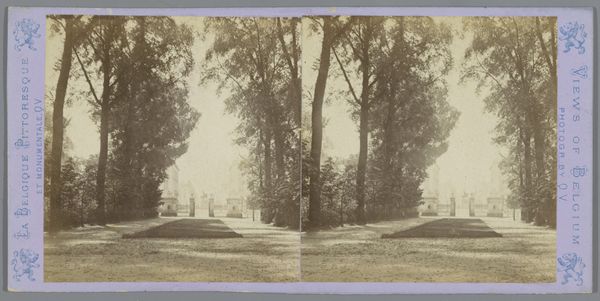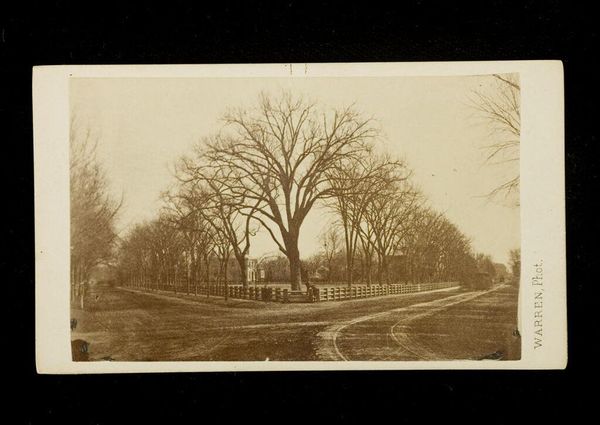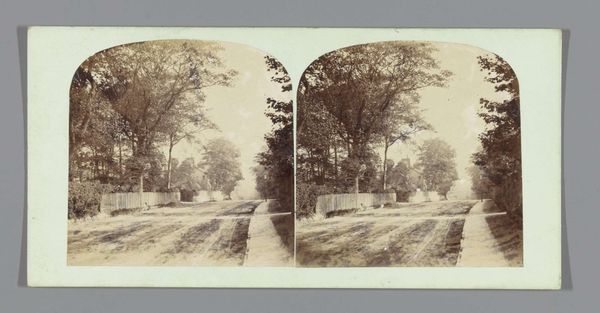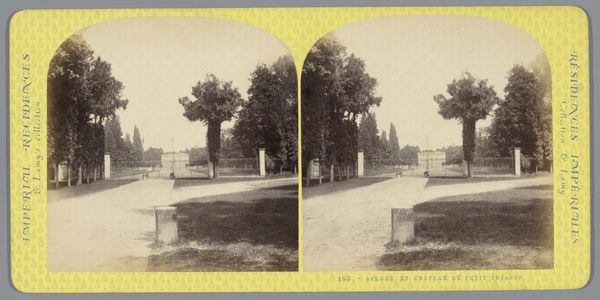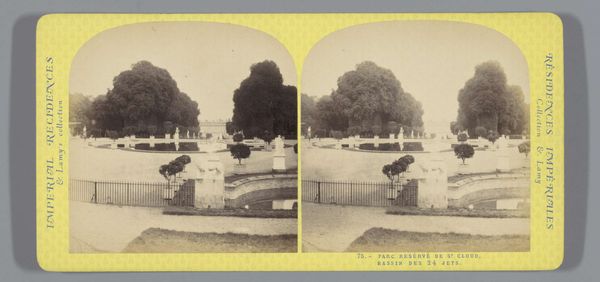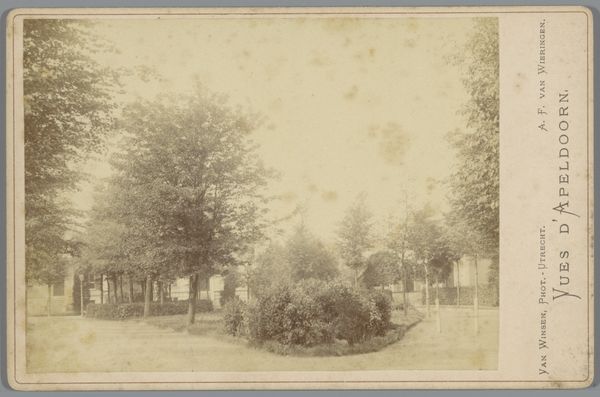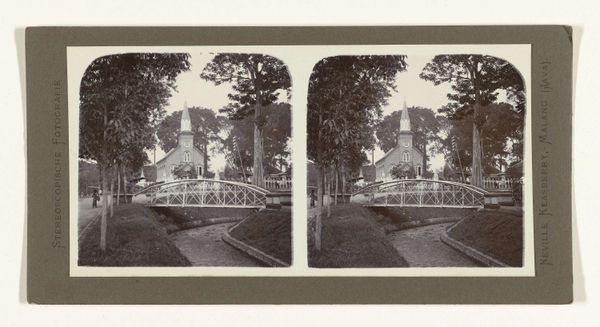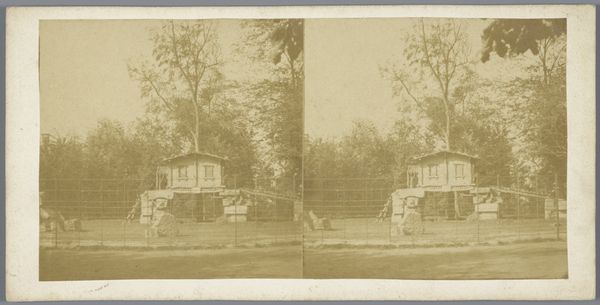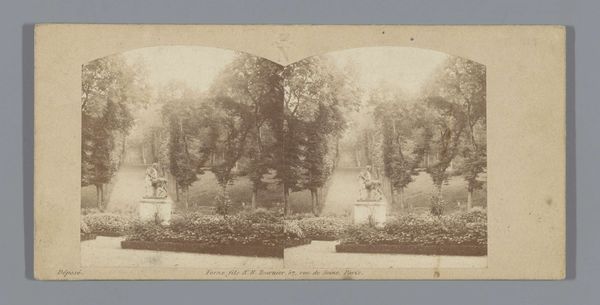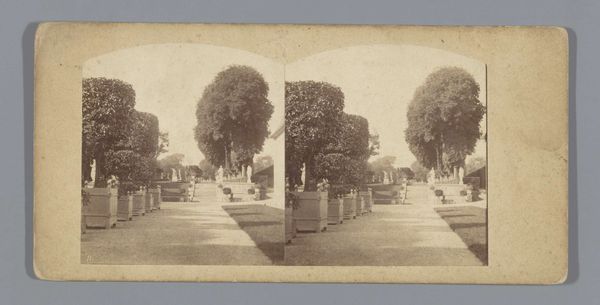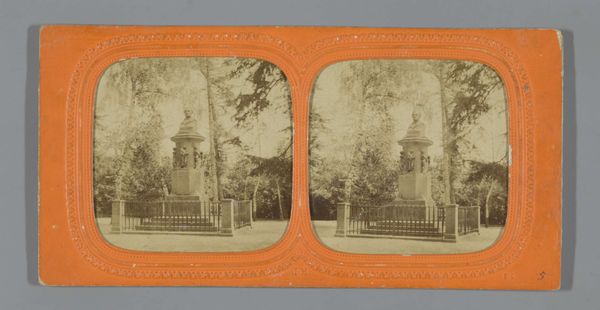
print, photography, gelatin-silver-print
# print
#
landscape
#
photography
#
gelatin-silver-print
#
park
#
cityscape
Dimensions: height 85 mm, width 170 mm
Copyright: Rijks Museum: Open Domain
Curator: This is an intriguing view of the Place Royale in Pau, captured through Jean Andrieu's lens sometime between 1862 and 1876. He employed the gelatin-silver print technique, giving it that distinctive, almost ethereal quality. Editor: My initial impression is one of somber serenity. The monochrome palette certainly contributes, but it's also how the avenue of trees frames a distant monument. Almost like approaching a hallowed site. Curator: It is a rather fascinating use of photography as a tool for urban representation in the 19th century. Think about the labor and resources required to create a gelatin-silver print, the social and economic conditions surrounding photographic studios in that period. Photography wasn't just art; it was a commercial enterprise. Editor: Absolutely. And I’m drawn to that distant monument – what appears to be a statue of a king or possibly a god, elevated, revered, even from a distance. It reminds me of the symbols of power in classical landscapes. What’s fascinating is how the linear perspective directs the eye, emphasizing this symbolic figure, which also happens to stand for Royal authority in general. Curator: And how that authority is staged and viewed. The photographic process allows for the standardization and wide distribution of these images. Were they primarily souvenirs? How were they consumed by various classes? The very act of photographing, printing, and selling an image becomes a form of cultural production itself. Editor: Yes, and one with fascinating cultural connotations! Take the framing trees for example. They're almost like guardians of memory, channeling something much older while leading us to this icon of modernity or contemporary times: an avenue within the heart of the city. It reminds me of certain staged photos of graveyards of that period where life and death stand juxtaposed! Curator: Precisely. By studying the materials and techniques, we understand not only Andrieu's intentions but also the infrastructure that allowed this type of image-making to flourish. Editor: I find myself pondering the symbols employed here, particularly what that statue embodies and the narratives constructed through this carefully arranged visual language. What cultural history has been framed into one image, here? Curator: This perspective allows us to connect tangible object and immaterial idea, reminding ourselves how they're truly enmeshed. Editor: A beautiful example of how image and symbolism speak across time.
Comments
No comments
Be the first to comment and join the conversation on the ultimate creative platform.
